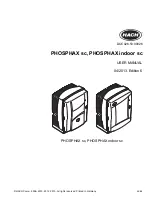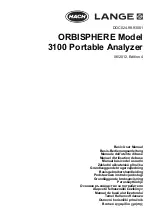
PROline Promag 10
5 Operation
Hauser
51
5.3 Error
messages
Type of error
Errors that occur during commissioning or measuring are displayed immediately. If two
or more system or process errors occur, the error with the highest priority is the one
shown on the display.
The measuring system distinguishes between two types of error:
•
System error:
this group comprises all device errors, for example communication
errors, hardware errors, etc.
→
•
Process error:
this group comprises all application errors, for example pipe partially
filled, etc.
→
Fig. 37:
Error messages on the display (example)
1
Type of error: P = Process error, S = System error
2
Error message type:
$
= Fault message, ! = Notice message
3
Error designation: e.g.EMPTY PIPE = empty or partially filled measuring tube
4
Error number: e.g. #401
5
Duration of most recent error occurrence in hours, minutes and seconds
Error message types
Notice message (!)
•
Displayed as
→
Exclamation mark (!), error type (S: system error, P: process error).
•
The error in question has no effect on the inputs or outputs of the measuring device.
Fault message (
$
)
•
Displayed as
→
Lightning flash
(
$
)
, error type (S: system error, P: process error)
•
The error in question has a direct effect on the inputs or outputs.
The response of the inputs or outputs (failsafe mode) can be defined by means of the
appropriate function in the function matrix (see Page 71).
!
Note!
For safety reasons, error messages should be output via the status output.
5.4 Communication
(HART)
In addition to local operation, the measuring device can be configured and measured
values can be obtained by means of the HART protocol. Digital communication takes
place using the 4–20 mA current output HART (see Page 42).
The HART protocol allows the transfer of measuring and device data between the HART
master and the field devices for configuration and diagnostics purposes. The HART
master, such as a handheld terminal or PC-based operating programs (such as
FieldTool), require device description (DD) files. They are used to access all the
information in a HART device. Information is exclusively transferred using so-called
"commands". There are three different command classes:
1
2
4
5
3
X X X X X X X X X X
# 0 0 0 0 0 : 0 0 : 0 5
P
F
06-
x0
xx
xx
x
x
-07-
x
x
-x
x
-xx
-000
















































